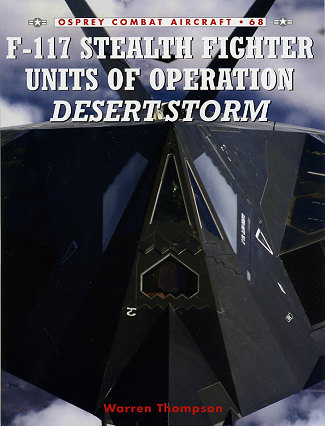 With the
imminent retirement of the type, this book comes along at an opportune time.
Author Warren Thompson is well known for his excellent books and thorough
research into them. Mark Styling provides 13 pages of profiles and door artwork
to add to the spice of the book.
With the
imminent retirement of the type, this book comes along at an opportune time.
Author Warren Thompson is well known for his excellent books and thorough
research into them. Mark Styling provides 13 pages of profiles and door artwork
to add to the spice of the book.
This edition does not go so much into the development history
of the aircraft as it does the operational history of the type. This starts with
the early years of secrecy with missions being flown only at night to keep out
of the public eye. All this night flying was as much planned as it was done for
stealth as the vast majority of missions that this aircraft would be flying
would be at night. So might as well get the crews used to it.
As you know, the F-117 is really a fighter bomber as it
carries no defensive weaponry and is not even close to being a dog-fighter,
thanks to its unique design. It is also a difficult aircraft to fly with a
rather narrow maneuverability range. However, it excels at being difficult to
detect on radar, hence its usefulness.
The book covers not only the operational development of the
type, but the preparations taken to put it in the field and that needed for
precise planning for its use. As it was based at King Khalid air base in Saudi
Arabia during Desert Shield/Storm, planning was paramount. The goal was to have
it enter and leave Iraqi air space during the hours of darkness, not an easy
task as the base was about as far from Iraq as any in Saudi Arabia. Missions
were long and often required refueling immediately upon reaching friendly
territory. Often the missions were scrubbed due to bad weather and the aircraft
had to return with their weapons still on-board. However, the aircraft was a
huge success, with no airplanes being lost to enemy action and each mission that
was completed performing the task for which it was sent.
All of this and more are told in this excellent book, full of
color and black and white photographs of the machines and the people who helped
maintain it. As with other Osprey titles in this series, it is one I can
recommend to you with confidence.
April 2007
For more on the complete line of Osprey books,
visit www.ospreypublishing.com. In the US, it is
Osprey Direct at 44-02 23rd St, Suite 219, Long Island City, NY 11101., where you can
get a catalogue of available books.
If you would like your product reviewed fairly and quickly by a
site that has over 350,000 visitors a month, please contact
me or see other details in the Note to
Contributors.
 With the
imminent retirement of the type, this book comes along at an opportune time.
Author Warren Thompson is well known for his excellent books and thorough
research into them. Mark Styling provides 13 pages of profiles and door artwork
to add to the spice of the book.
With the
imminent retirement of the type, this book comes along at an opportune time.
Author Warren Thompson is well known for his excellent books and thorough
research into them. Mark Styling provides 13 pages of profiles and door artwork
to add to the spice of the book.